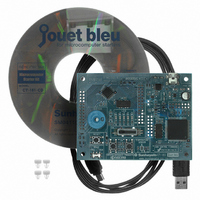CT-161-CD Fujitsu Semiconductor America Inc, CT-161-CD Datasheet - Page 63

CT-161-CD
Manufacturer Part Number
CT-161-CD
Description
KIT 16LX FOR MB90F387
Manufacturer
Fujitsu Semiconductor America Inc
Series
F²MC-16LXr
Type
MCUr
Specifications of CT-161-CD
Contents
Board, Cable, CD
For Use With/related Products
MB90F387S
Lead Free Status / RoHS Status
Lead free / RoHS Compliant
Other names
865-1103
Available stocks
Company
Part Number
Manufacturer
Quantity
Price
Company:
Part Number:
CT-161-CD
Manufacturer:
Fujitsu Semiconductor America
Quantity:
135
© Fujitsu
4.3
The programmable pulse generator (PPG) enables you to obtain the output of various widths
of pulse from the microcomputer through programming. You can basically output a pulse
wave from the microcomputer when you make the following settings on the PPG timer:
4.2.1
4.2.2
Buzzers are classified into two types. One type, called a self-excited buzzer, generates
only one sound by the self-resonance of the crystal when a voltage is applied. The other
type, called a separately excited buzzer, generates different kinds of sound according to
the frequency of applied voltage. The self-excited buzzer can generate only one kind of
buzzer sound based on the self-resonant frequency of the crystal. The separately excited
buzzer can generate the buzzer sound that varies depending on the frequency of applied
voltage. Therefore, the separately excited buzzer enables to vary the sound in a wide
range of frequencies.
The board of the Starter Kit has a built-in buzzer, the KBS-13BB-4P-2 made by Kyocera
Corporation. Since this buzzer is of separately excited type, it can be used to produce
various tone colors of sound in principle.
The microcomputer can output a pulse wave in several ways. The basic method to
output a pulse wave is to use a built-in timer and the setting of H-level and L-level widths.
The microcomputer has different built-in timers that can be used for different purposes.
Here, use the programmable pulse generator (PPG) timer, which is convenient for pulse
output, to output a simple pulse wave for sounding the buzzer.
How to sound the buzzer by PPG
Self-excited and separately excited vibrations
Pulse wave generated by the microcomputer
Setting of L-level and H-level duration
Setting of PPG count clock
Figure 4.5 buzzer
-
57
-
buzzer






















